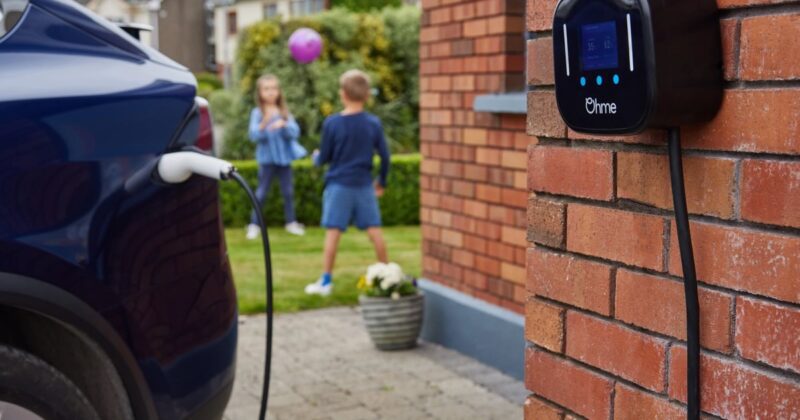The future of electric vehicles might one day be a car with its own onboard charger and a built-in electricity supply deal – almost like a phone contract that offers both device and network.
But today, as Australia looks forward to the imminent arrival of vehicle-to-grid (V2G) enabled electric vehicles (EVs) and chargers, the future is much more basic – and arguably easier and cheaper.
The deeply nerdy yet critically important playing field is around whether V2G cars will be DC and rely on a device outside the vehicle to convert it to and from the AC power supplied by the grid.
Or whether it will be AC, where an EV’s battery is fed from an onboard bidirectional charger with its own inverter.
One allows the EV to plug into any charger anywhere, without requiring complicated extra software to tell it where it is and therefore which network connection rules it must follow.
The other allows the vehicle to be a truly autonomous power station and opens new commercial opportunities for owner and carmaker.
DC-based EVs will be first off the blocks, said Charles Walker, the recently former chief executive of EV charger maker RedEarth.
“DC bidirectional chargers are way more simple. It can punch out a lot of energy. You can punch in a lot of energy when you park your car at the server,” he said at the Smart Energy conference in April.
“EU companies are basically tending towards DC. The US has already decided on DC, and some of their car companies are doing it already. Consumers don’t care but they want fast charging… They want plug and play. They don’t want technical engagement. They want it to work, and they want it installed and as cheap as possible.
“I think DC technically is better. It’s faster, it’s cleaner, it’s more efficient. All cars are set up to do it in and out.”
But the roadmap for many EV manufacturers is an onboard AC bidirectional charger, says Open Charge Alliance Asia-Oceania ambassador Riccardo Pagliarella.
The possibilities include selling a car with its own power deal with the carmaker being the electricity retailer, providing an ongoing revenue source for vehicles that don’t have the same ongoing maintenance and after sale service needs as ICE cars.
Tesla is one carmaker which also has a commercial battery division. A leap from equipment supplier to provider of energy services within its own walled garden wouldn’t be complicated.
Some of the challenges are engineering: a solar inverter doesn’t need to operate at high power levels for hours at a time yet is normally warranted for only five to 12 years. A bidirectional inverter in a car would need to perform and last for longer, Pagliarella says.
Others are that cars must know when they are connecting into a new network and what the requirements will be.
The ultimate unfriendly consumer experience would be a car that can charge at home with one distributed network service provider (DNSP) but can’t connect to the one at work – a real possibility in Victoria which has five different DNSPs, three of which cluster in Melbourne.
These extra hardware, software and compliance needs come with a price tag that the world’s major car factory China has historically dismissed, Pagliarella says, where the government is instead favouring the cheapest possible car.
Don’t rule out AC chargers yet
Recently however, China has green-lit 30 large-scale V2G projects which trial a range of solutions, and at least one of these is outwardly AC-based.
That indicates the world’s largest EV market is open to reexamining the space, Pagliarella says.
Although Renault is the only carmaker really indulging in onboard AC chargers with an 11 kW AC bidirectional unit, this tech shouldn’t be written off yet, says RedEarth CEO Mark Sheldon.
“At the end of the day it’s a question of the regulator and all the players in the market coming to some sort of agreement,” Sheldon says.
“It is easier to have all of this infrastructure in the car and just plug it into the wall, it’s just how you are going to do it.”
What will be required is for carmakers, regulators and DNSPs to loosen their grip on behind the meter tech.
Sheldon says the Australian Energy Market Operator and DNSPs need to relinquish their desire to control each individual behind-the-meter devices.
Pagliarella says we’ll know the market for V2G AC bidirectional chargers is mature when carmakers no longer care when consumers do with their car battery, within reason, rather than dictating what they can do within a walled garden.
Standards step changes
Changes to the standards controlling how different pieces of kit talk to the grid and each other are offering glimpses of that future, albeit in an unplanned way.
South Australia has been running trials for V2G for several years, but the state’s main network exempted chargers from complying with the national standard governing inverters to allow this to happen.
The Nissan Leaf and the Mitsubishi Outlander plug-in hybrid are the only vehicles allowed to use their V2G function in South Australia already because they use CHADEMO plug protocols – but most new EVs are on a different protocol, CCS2.
The standard AS 4777.2 stipulates how inverters – the devices that switch rooftop solar or battery DC power to grid-required AC – operate.
The standard was updated late last year to include V2G chargers, which allowed the Clean Energy Council to certify these devices and add the first to its database from around the middle of 2025.
It also means EV owners don’t need to ask their DNSP to approve their charger model.
The challenge for cars with AC chargers is the whole car will need to comply with AS 4777.2, and under current rules any software upgrades to inverters, for example, would need the car to be recertified.
Another upgrade to ISO 15118, version ‘-20’ specifically, standardises how those chargers talk to DNSPs, the utilities that manage who connects to their patch of the grid and how, and opens the way for true interoperability between EVs and charging infrastructure across brands, wrote enX consultant Jon Sibley last year.
Still in draft for ISO 15118-20 are extra details covering how a car with AC bidirectional charger will actually interact with the grid.
There are 17 DNSPs in Australia, and an onboard bidirectional charger would need to know which of these it was connecting to at any one time and what the rules to connect were.

“There’s other regulatory questions, like how the DNSP will treat the connection process. Does it need to be dynamic… is it needed to be on the EV itself or on the AC charger, which communicates back to the EVS?” said Fronius solutions engineer Geordie Zaphiris during the Smart Energy conference.
And lastly, the Open Charge Point Protocol 2.1 (OCPP) is finished, but the certification tools are not. This allows a bidirectional-enabled car to remotely control a charging station.
It allows V2G cars to integrate with billing systems and optimise exports and imports, but most importantly it has advanced cybersecurity to protect those transactions and metering of energy in and out.
The experts are in agreement that DC bidirectional charging will come first, but tentatively point to a time in the future when a more flexible, more interesting car which is more like its own autonomous power station might happen.
But to get there, many very nerdy, very essential standards, rules and protocols must be laid down to make carmakers, lawmakers, DNSPs and regulators feel safe enough to let go and allow the technology to evolve.

Rachel Williamson is a science and business journalist, who focuses on climate change-related health and environmental issues.

